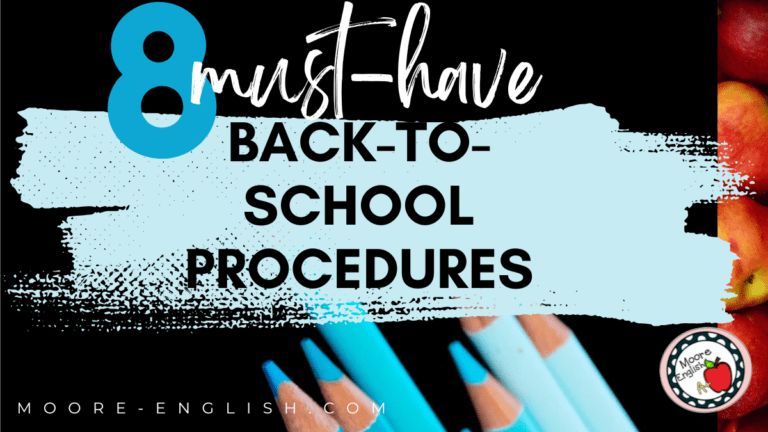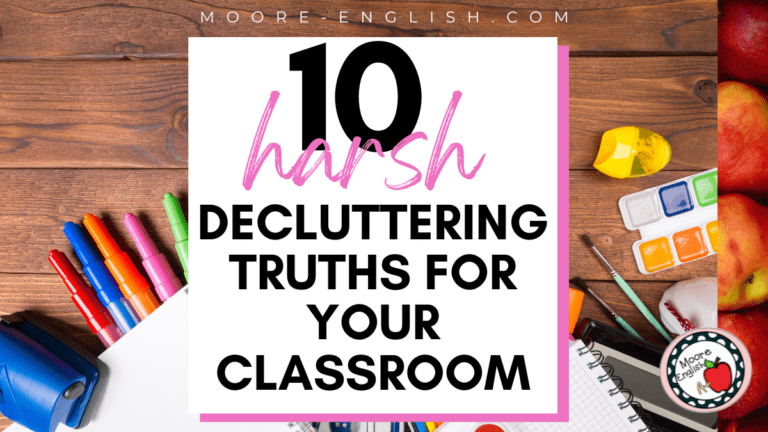I love fall: scarves, plaid, pumpkins, cooler weather. But, as a teacher, I also know that fall brings the beginning of flu season: sneezing, coughing, and sniffling students are the perfect recipe for a sick classroom. Like the best lesson plans and classroom management, it’s important to be proactive about classroom health. Here are the best tips and tricks for “weatherizing” your room!
Get Students Onboard: As the weather begins to turn, have a frank conversation with your students about health. At the secondary level, this conversation is pretty short and blunt, but it never hurts to remind students to wash their hands and cover their mouths.
Make Health Routine: Build classroom “check ups” into your daily or weekly classroom routine and procedures. This week, I reminded students that there is hand sanitizer right next to the door and right next to the bathroom pass. This is the location of my May-I-Borrow-Shelf, which students can access anytime during the period. In the same place, we also keep tissues, paper towels, and Clorox wipes. Another way we build cleanliness into our room is to do a class “wipe down” once a week. During this time, everyone gets a Clorox wipe and cleans their desk, chair, and any handles they can find. Even my older students view this activity as a kind of game, so everything gets clean without too much complaint.
Dress in Layers: This year, I travel between classrooms, moving from mobile classroom to mobile classroom. This means I don’t always know what climate I’m walking into, so I wear several layers. Sometimes it’s like dressing for all the seasons in a day. For this reason, I also keep an extra sweater, socks, and gloves in my classrooms. I also encourage students to bring an extra jacket to keep in their backpack.
Keep a Weather Eye: Just like we keep an eye on the weather, keep an eye on students, too. Inevitably, sadly, some of our students will not have access to warm clothes. How you decide to respond is, ultimately, your choice, but most communities have some options. In my building, we have a student closet that our at-risk counselor manages. Similarly, when students do need a clothing voucher, I can quietly contact the guidance office and, if needed, send the student to the office. Of course, we’ve also had times when the closet is empty or missing the necessary sizes or when the vouchers have run out. When this happens, we can send out a call for donations, mention the need to a local charity, or hit the clearance racks ourselves.
Manage Your Health: While it’s important to keep our classrooms and our students healthy, it’s also important for teachers to remain healthy. I’m constantly working toward ending my own teacher martyrdom and finding a more sustainable balance. In my own life, I noticed a huge difference when I started taking a daily vitamin, and I know other teachers that swear by daily apple cider vinegar, Emergen-C, and Echinacea. I’m not a doctor or medical professional, so before you make one of these changes, chat with your family physician. Similarly, being prepared to sickness can be a great way to be proactive. Before you get sick, plan for emergency absences by putting together some emergency sub plans that can be deployed at a moment’s notice. To help you prepare for an emergency absence, check out this free Substitute Cover Letter.
Before you start class tomorrow, take an assessment of your classroom. How is your classroom hygiene? Are you ready to be proactive about sickness? Let us know what other tips and tricks you have for keeping your classroom healthy.
Remember to subscribe for new posts every Tuesday. Follow along and keep in touch with Moore English on Instagram, Pinterest, and Twitter.
Photo by rawpixel on Unsplash






